‘Dead’ for 19 minutes
Forres GDP Ken Glass has used a traumatic personal experience to kick-start a campaign to introduce public defibrillators into his local community
Ken Glass knows he is one of the lucky ones. Every year, the Scottish Ambulance Service is called out to nearly 9,000 people who have suffered an out-of-hospital cardiac arrest (OHCA). Of these, only 3,000 result in a resuscitation attempt and only six per cent of these will survive to a hospital discharge.
In February last year, Ken was effectively dead for nearly 20 minutes after suffering an OHCA. He survived thanks to the quick actions of his friend Dave Chapman who kept him alive until the ambulance arrived. Now Ken, a GDP in the Moray town of Forres, is leading a campaign to get more public access defibrillators (PADs) into the Moray community initially, and help spread the word about the importance of life-saving training and education as far as possible.
Drama off the pitch
“Lying in the hospital bed, I looked into her tear-filled eyes and realised I have to make this count for something, somehow”
Ken graduated from Glasgow in 2004 and headed up north to Forres to do his VT year. Between 2005 and 2007 he worked part-time in the salaried service in Inverness and at a practice in Elgin before taking up the opportunity to buy into his old VT practice.
He became a VT trainer himself in 2014 and, in the summer of 2015, rebranded to Forres Dental Care and moved premises to a purpose-built, five-surgery practice on the edge of town. The practice now has five dentists – two partners, one associate and two VTs – as well as two hygiene therapists and a hygiene therapy VT.
A keen amateur footballer, Ken had played since childhood and regularly turned out for teams at university and latterly on a local pitch in nearby Findhorn on Sundays. In February last year, he was out on the grass playing a 10-a-side match with friends when his life was suddenly turned upside down.
He said: “My wife was at a course locally, so I had our eight-year-old daughter Alex with me along with a couple of her friends who were playing beside the pitch. I also brought my friend Dave to play that day. We were playing football and the kids were happy in the play park.”
About an hour into the game, one of the players took a shot and, being a committed defender, Ken stuck out his head and “obligingly blocked the shot with the side of my head”. He continued: “Immediately I felt I had a concussion. This is not abnormal for me, as I’ve had concussions before. So, I left the pitch and rested at the side for a bit to wait for it to pass. It didn’t. I went off a wee bit to be sick and at this point realised it would be sensible to be checked out medically – I give that advice often enough when folk have had trauma.
“So I spoke to my mate Dave and asked him to drive me in my car to the hospital. He was probably glad to get off playing the rest of the game but little did he know the exercise I had in store for him!”
The kids were bundled into the back of the car and Dave set off with Ken in the passenger seat. At this point Dave, who is the supervisor at the local swimming pool and who was fortunately up-to-date with his CPR training, was asking Ken questions to try to assess the state of his head injury. He covered symmetrical movements, speech ability, time/date/place awareness, vision and it appeared all was fine.
But then, suddenly, all was not fine.
About five minutes into the journey, Ken’s heart stopped. He said: “No chest pains. No sense of impending doom. No drama. My heart just stopped.”
Dead for 19 minutes
Ken explained that what follows has been put together for him by Dave, passersby and all present as he has no recollection from this point on. “Because, essentially I was not present,” he said.
Dave immediately realised the seriousness of the situation and quickly pulled over to the side of the road and tried to get Ken to respond. He then got out and dragged his friend from the passenger seat and onto the pavement, at the same time calling 999 with his phone tucked between his ear and his shoulder. Understandably, the kids in the back were extremely upset but Dave managed to somehow concentrate on the task in hand.
He began CPR and was helped by a number of passersby who, in turn, took over the 999 call to enable Dave to concentrate on compressions and others who then took turns giving CPR until the ambulance arrived. A passing child therapist also got into the car to help calm the children and her partner managed to co-ordinate everyone. One of the players from the earlier game, a local GP, then turned up and, along with Dave, performed “textbook CPR”.
From Ken’s heart stopping to the ambulance arriving was 19 minutes and upon arriving the paramedics, realising that CPR was being provided by trained individuals, had time to get organised before taking over the attempted resuscitation. They gave Ken five shocks on the ground and were unable to achieve ROSC (return of spontaneous circulation). At this point, the paramedics realised the children in the back were witnessing the whole episode and that the prospect of an unsuccessful outcome was growing more likely with each failed shock, so they moved him into the back of the ambulance. They gave a further two shocks there and, on the seventh attempt, ROSC was finally achieved.
The ambulance blue-lighted to Dr Gray’s Hospital in Elgin while Dave had the unenviable task of phoning Ken’s wife Deirdre.
Ken said: “This is when Dave was left holding my world in his hands. He looked after my daughter and he made that phone call to my wife. He picked her up, kept her calm and brought her to the hospital. Alex’s friends’ dad collected them from hospital and my daughter was then held by close friends on and off for a couple of weeks while I was in hospital. I’m not sure how much these folk will ever know what they did for us.”
- Ken (right) with Dave and one of the PADs that they have helped install in the local area
- Ken with Alex and Deirdre
Road to recovery
At Gray’s, Ken was given a CT scan to check for bleeds caused by head trauma, which was thankfully all clear. The assumption at that point was that he has suffered a massive heart attack at the age of just 36. He was sedated, intubated and placed on a ventilator before being transferred 80 miles to Aberdeen Royal Infirmary (ARI).
En route to the ARI he arrested a “number of times” but hospital and paramedic staff managed to reestablish a rhythm and, on a couple of occasions, his heart was able to restart itself.
In Aberdeen, he had an angiogram that showed his heart was healthy and showed no signs of pathology. His arteries were even described as “pristine”. The cause of the cardiac arrest was put down to takotsubo cardiomyopathy – a condition which causes the left ventricle to stop contracting. It is also known as acute stress-induced cardiomyopathy, broken heart syndrome and apical ballooning syndrome. It was first reported in Japan – takotsubo means ‘octopus pot’ in Japanese, as the left ventricle changes shape and resembles the pot, which has a narrow neck and a round bottom.
Ken continued: “So this all happened on Sunday and my wife then had the task of making the phone call to my dad, to her family and to our friends to try to explain what was going on. She then had to call my business partner and say I won’t be in tomorrow and might well never be back. Bombshells landing all over the place.
“You don’t realise the lives you touch until your touch is gone.
“I was kept sedated until Thursday when they stopped the sedation and removed my intubation which, it seems, I removed myself in a less than helpful way. Then I’m back in the room. It took a good 24 hours for the meds to fully wear off.
“I had multiple cracked ribs and sternum – thanks Dave! I had inhaled my own vomit – thanks Dave! I also had a crazy chest infection and still needed high-flow oxygen for 48 hours which is almost impossible to sleep with. Fortunately, my sister-in-law had sent over a Discman and my wife had brought down some CDs so I was able to indulge in some Matchbox 20 and Bon Jovi without anyone tutting!”
Because of the takotsubo, Ken was fast-tracked into the Aberdeen University MRI scanner as part of a research project. “I was so grateful that what was originally talked about of months in hospital could reduce to weeks – I’m not a great patient,” he said.
He was offered genetic testing to see if he – and potentially his daughter – was predisposed to the condition. To his relief it came back clear but he was told he needed an internal defibrillator fitted. Once that was in place and he had suitably recovered, he was released a little over two weeks after the incident.
Back to normality and campaigning
Ken explained that, as well as concentrating on recovery and getting back to normality, he was conscious that he now needed to prove to his daughter that he really was okay again. After a fairly traumatic experience for all involved, he was determined to show her he was back and nothing had really changed.
He said: “I needed to show her I am fine. So, walks in the woods. Making dinner. Being around and playing and behaving like usual was my only ambition. That and getting back to work as soon as possible.
“After getting out of hospital I took a further four weeks to establish myself again. My system was pretty shocked, fatigued and open to infections and bugs. My immune system was shot for a further six months anyway, but I got back to work full time.”
With plenty of time to reflect during his recovery, Ken admits he struggles to put into words how much his friend Dave, and what he did that day, means to him and his family. He said: “People tell me I was lucky. I prefer the word fortunate. I love Dave, and not just for what he did for me and my family. He has been a great friend for many years – he came to my wedding dressed as Batman – but, to me, he’s a real-life superhero.”
His reflections on his experiences didn’t end with his gratitude to his friend. He said: “Lying in the hospital bed coughing up thick, black, bloody sputum with my wife holding a cup for me, I looked into her tear- filled eyes and realised I have to make this count for something, somehow.
“It was when I got home and was around the town and got to thinking about PADs that I realised Forres is lacking in them. Looking at the rural communities around us, some have self-funded PADs, some haven’t, and some haven’t even considered
it as a possibility.”
Ken found out that in Grampian in 2016, 448 people had an OHCA and only 18 survived. He admits that some might not have been saved by a defibrillator, but he also argues that many could have.
“The need for CPR is more important than the PADs,” said Ken, “but our intention is to install multiple PADs, get communities talking and raise awareness. Then we can provide CPR training, ideally at no charge to anyone who wants it. In my opinion, kids should have this in their curriculum from when they are in primary one.”
Future plans
Ken has met with community groups and many have jumped on board to support his campaign ‘Defibs For Moray’. Some have raised money over a couple of weeks and some have taken longer, but, so far, the fledgling group has managed to install four PADs in the area. More groups are applying for funding and the hope is that they can start to make a real difference in the local area before looking further afield.
Ken said: “I have a life. I have a family. I have a business. I have friends. I have a drive and desire to ensure that if anyone has to go through what my family has gone through then we want to stack the odds in their favour and that their outcome can be as good as mine.
“Ideally, we will lead by example and there will be politicians and NHS bigwigs that recognise the benefits of having multiple PADs available, realising the cost saving in terms of the in-hospital care and post-hospital care of survivors if they have had prompt and effective CPR and AED placement.
“Who knows, maybe the Scottish Government will start providing some community CPR training and installing PADs nationwide?”
MORE INFO
To find out more about Ken’s campaign, email info@defibsformoray.com or visit www.defibsformoray.com
Defibs for Moray will be attending the Scottish Dental Show in April (27 and 28, Braehead Arena) to raise awareness and to collect donation for their campaign. Register now at www.sdshow.co.uk
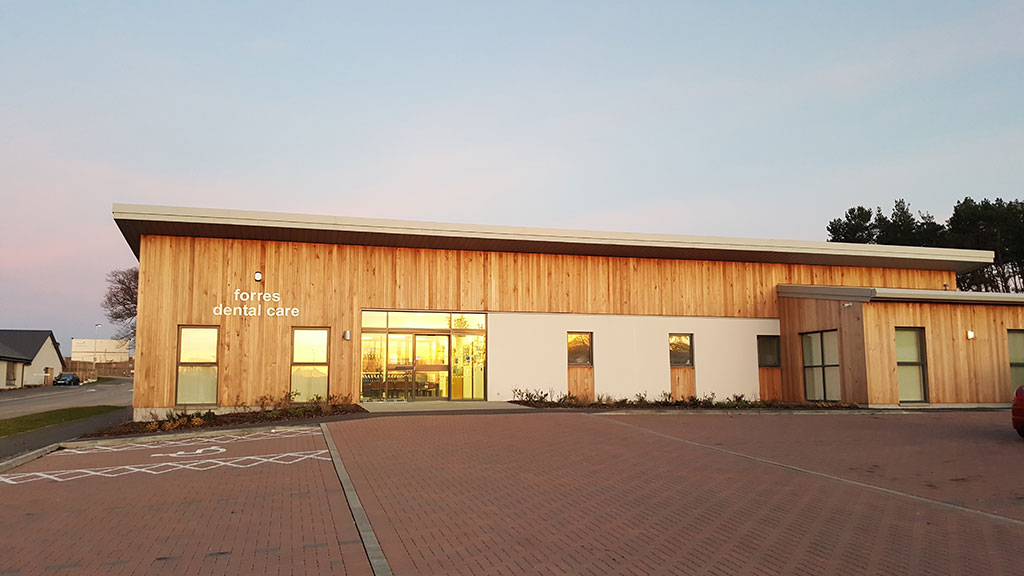
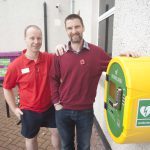
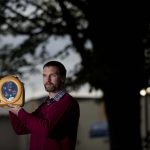
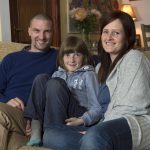
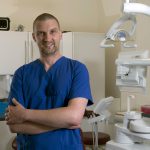
Comments are closed here.